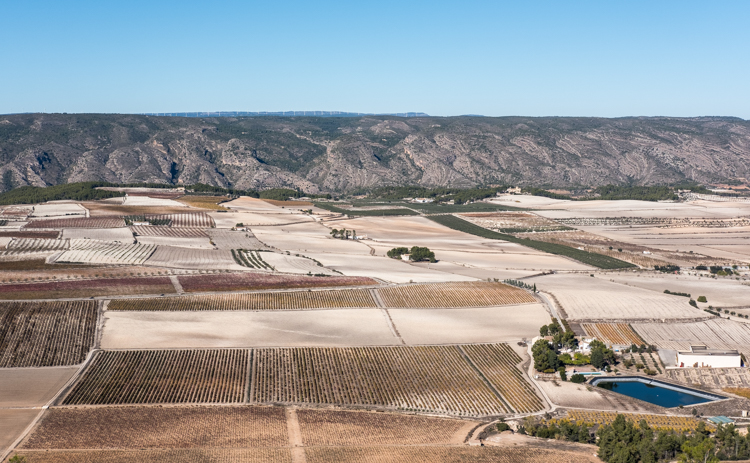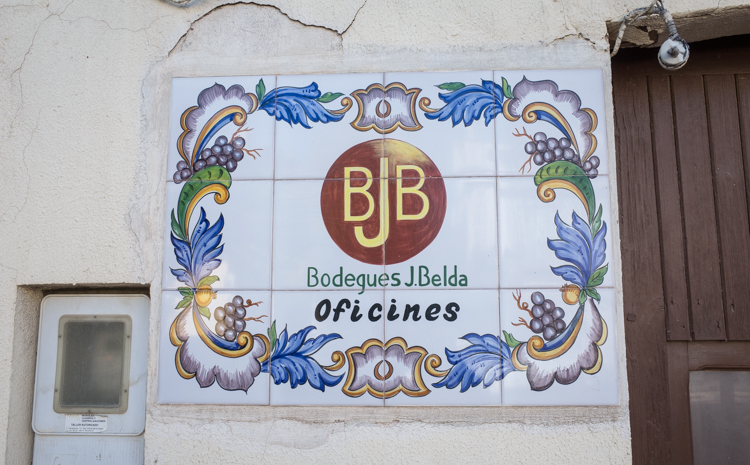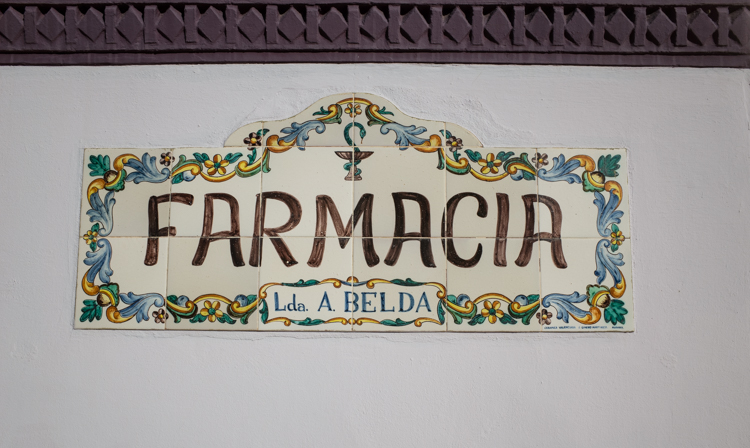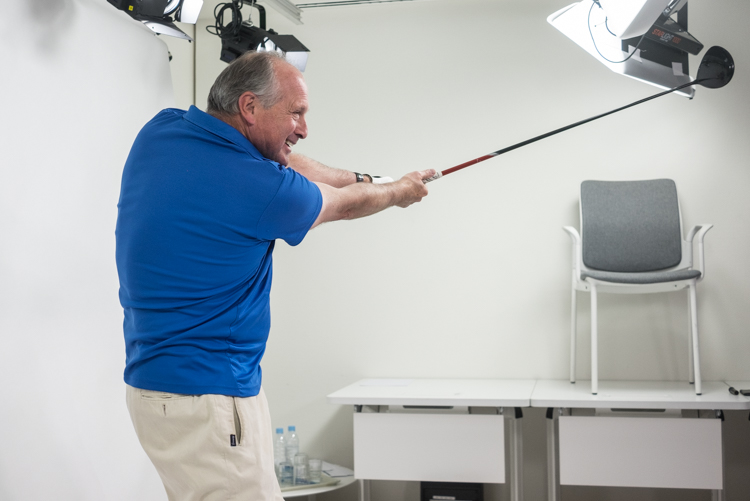Most of this week’s blog is from a visit to winery on the border between the Valencia region and Castilla La Mancha, about 100 km from Alicante. The trip was arranged by our wine club Bacchus and also included a visit to an interesting archeological site, an excavation of a pre-Roman village, and lunch in a nearby small town. I finish with some images from the office and Alicante.
46_1
Arriving at the bodega Celler del Roure, I noticed the unusual sign pointing to the office:

46_2
The vineyard:

46_3
Our host (whose name I did not catch), a member of the family that owns the winery, started by telling us about the history of the place and explained their approach to wine making:

46_4
Celler del Roure looks somewhat unassuming, mainly because much of the actual wine making takes place underground. This is how things have been done here for thousands of years, apparently:

46_5
In the old days, these underground containers were used to mature the wine, as opposed to modern barrels:

46_6
The grapes would be fermented above ground, and then the young wine would flow in these small ditches to the storage containers:

46_7
The modern way to store the wine, using French oak barrels, but still in underground storage:

46_8
The barrels may be new, but the wine they contain includes some indigenous grape varieties that are not grown anywhere else (in addition to more standard varieties such as Merlot or Monastrell):

46_9
They are experimenting with the old methods as well, resurrecting some of the old storage containers:

46_10
A new underground storage room being dug out:

46_11
A storage room converted to a small concert hall, used for jazz and chamber music:

46_12
The modern steel fermentation tanks, similar to most other wineries around the world:

46_13
Having seen the facilities, we moved to the tasting room where Celler del Roure had provided some tapas to go with the wine–good thing too, as it was approaching noon and many of us had not yet had breakfast due to the early start:

46_14
Our host talks about the wines we are trying…:

46_15
…while this lovely young lady serves up the goodies:

46_16
After the tasting, we moved on to a local tourist attraction, an Iberian village near Moixent. It dates from about 2500 years ago, so before the Romans arrived here, and provides a fascinating glimpse of the life of these original inhabitants of the Iberian peninsula. This is the entrance to the village:

46_17
The archeologists estimate that 800-1000 people lived here, in houses ranging from 50 to 150 square meters, not a bad size by modern standards:

46_18
The lady who showed us around the site was extremely knowledgeable and enthusiastic. She really made the stones come alive:

46_19
The valley below the village, with Castilla La Mancha (with modern windmills!) on the other side. Just as was the case 2500 years ago, wine and other crops are grown in the valley:

46_20
Looking in the other direction, the landscape is quite lush and green:

46_21
Thus enriched oenologically and intellectually, we moved on to a small town called Fontanars dels Alforins, where we were going to have lunch. As we arrived, the Sunday morning market was coming to an end:

46_22
I went for a brief walk around the town, looking for details as I often do:

46_23
The town hall, with Valencian, Spanish and EU flags:

46_24
Local recycling:

46_25
The Beldas are apparently a prominent family in the town. They own this bodega:

46_26
And for the subsequent hangover, the Belda pharmacy can provide headache tablets:

46_27
Lunch was at a restaurant called Casa Julio. It is famous for having obtained a Michelin star in 2009 despite its remote location, and for its owner, Julio Biosca, requesting Michelin to remove the star in 2015 because he was tired of the publicity and obligations that come along with the distinction. He wanted to return to simpler food, the kind people in the town like. Traces of the Michelin past can still be seen, for example in this appetiser, a non-traditional version of pan con tomate. Truth be told, the food was good but not great, and I found the Michelin star difficult to understand:

46_28
Another starter, albóndigas, or meatballs. This is basic and traditional food:

46_29
Lamb chops:

46_30
My tuna:

46_31
On Monday morning I had to take my daughter to court–she had been called as a witness in a relatively trivial case, but justice must be done. The courthouse is in a rather low-rent neighbourhood called Benalua, perhaps best described as Alicante’s version of Barcelona’s El Raval. But such neighbourhoods are often very interesting, and this one is no exception. Before entering the courthouse, we had coffee in this local bar, Bodeguita Adolfo. The only other guest was this old-timer having his coffee and eye-opener:

46_32
Later in the week, the photo club Lightbox continued its “people of the office” project, shooting portraits of our colleagues expressing their private passions or hobbies. Christine is into vinyl:

46_33

46_34
Philippe is our food service manager, and a passionate golfer:

46_35

46_36
A couple of single images to finish the week. A woman reads a book in the urban park on Plaza Seneca in the centre. The weather has been very nice throughout November:

46_37
But this nice weather has a dark side. We are suffering a drought which has severely hurt the farming south of Alicante, and the water level in the reservoirs is well below normal, as can be seen here, near Busot:
